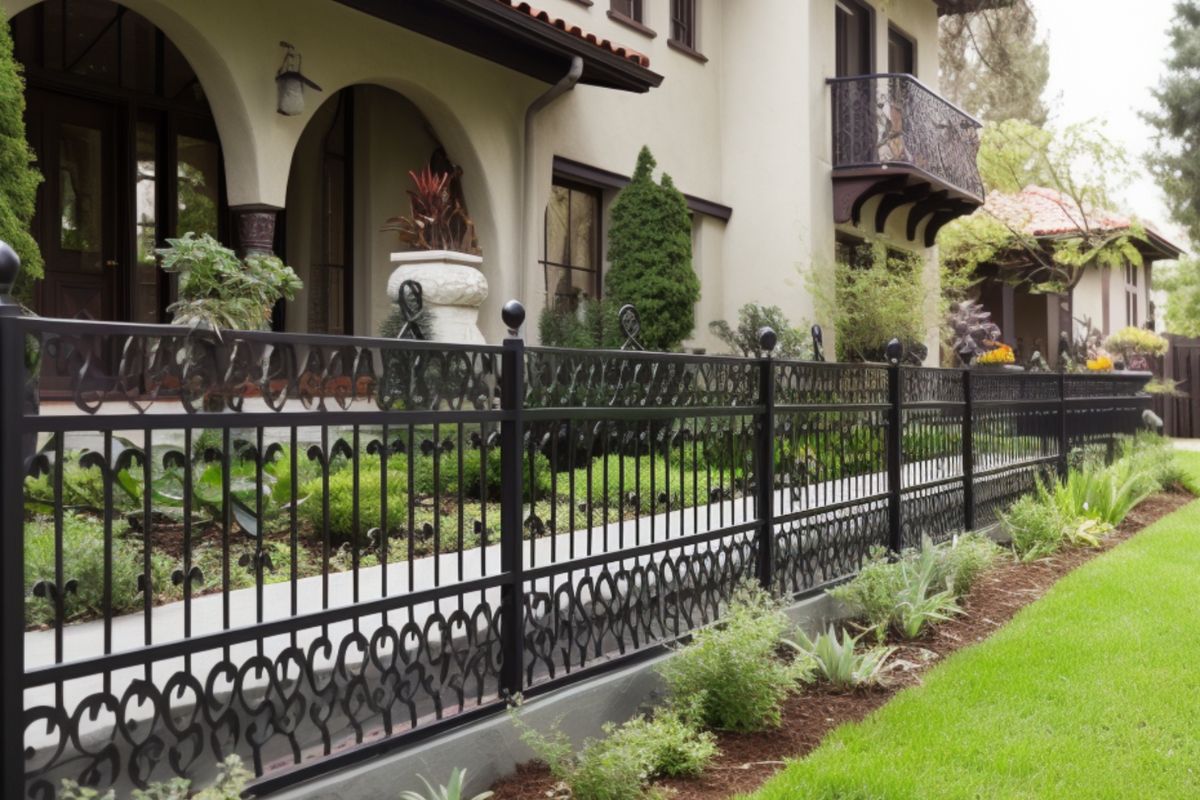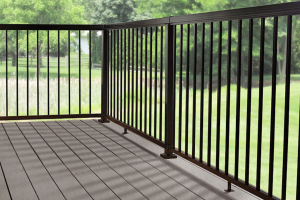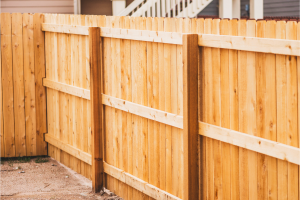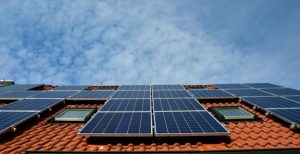Table of Contents
Looking to install wrought iron fencing? With its elegance and security, iron is a premium choice, but the costs may surprise you. This guide breaks down everything that impacts pricing, from materials and design to finding the right contractor. Get real per metre estimates and learn the unique advantages of iron over timber, steel and aluminium fencing.
Cost of Wrought Iron Fencing in Australia
Average Cost Per Linear Metre
The average cost of wrought iron fencing in Australia ranges from $250 to $500 per linear metre installed. This takes into account all costs involved, including materials, labour for installation, and any other associated expenses.
Several factors influence where in this range the final price will fall:
- Material Quality – Wrought iron fencing can be made from different quality grades of iron. Lower quality iron is more affordable but will rust and corrode faster. Higher grades are more durable but cost more. The alloy composition affects price.
- Design Complexity – More elaborate, ornate designs cost more than simpler, traditional styles. Factors like custom scrollwork, finial detailing, and powdercoating options add to the overall price. Simpler designs like classic speared tops bring costs down.
- Coating – Most wrought iron fences are coated for protection and appearance. More advanced coatings like hot-dip galvanizing or powdercoating are optimal but increase costs over painting.
- Installation Requirements – Complex installations on sloped or uneven terrain, in remote locations, or needing concrete footings or retaining walls will increase labour and equipment costs.
- Contractor Reputation and Experience – Established contractors with expertise in high-end wrought iron installations charge higher rates. Less experienced contractors tend to have lower pricing.
As a general rule of thumb, expect to pay around $350 per metre for standard wrought iron fencing from a reputable contractor. More ornate designs or complex installations may range from $400 to $500 per metre on average.
Breakdown of Costs
The total cost of a wrought iron fence installation is made up of several elements:
- Materials – This covers the wrought iron rails, pickets, posts and hardware, as well as any coatings or finishes to be applied. Quality materials ensure durability and account for 50-70% of the total budget.
- Labour – Skilled tradespeople are needed to fabricate and properly install the fence. Labour costs typically make up 20-30% of the total price.
- Equipment and Rentals – Certain tools and equipment like post pounders, concrete mixers, and powdercoating rigs may need to be rented for the installation.
- Permits – Local council approval and fencing permits need to be obtained in many areas, at an additional cost.
- Land Grading – The ground may need to be levelled and cleared along the fence line before installation, adding to prep work costs.
- Concrete – Concrete footings poured around posts add strength and stability. The concrete and its installation increases costs.
Additional costs like demolition and removal of old fences, gate installation, and lighting can also impact the total budget. Have contractors provide a detailed breakdown of exactly what is included in your quote.

Cost Estimation by Property Size
The size of the property perimeter requiring fencing is a major cost factor. As a general guide:
- Small Properties – A small suburban property with 50 linear metres of fencing could cost $17,500 to $25,000 for wrought iron installation. This assumes relatively straightforward access and no complex grading or demolition work.
- Medium Properties – A medium sized residential property around 150 metres could cost $52,500 to $75,000 for full wrought iron fencing. The increased labour time and material quantities add to the overall price.
- Large Estates – For larger rural properties, acreages or estates needing 500+ metres of coverage, total costs typically range from $125,000 to $250,000+. Longer spans, remote access, and ornate gatework can increase prices substantially.
When getting quotes, contractors will measure the exact perimeter requiring fencing and tailor their estimate based on all the site-specific factors. Things like slope, soil quality, access roads and tree clearing will influence the final price. Have companies visit the property first to provide the most accurate cost estimate.
Providing a detailed breakdown of the major cost factors involved with installing wrought iron fencing helps homeowners and property owners understand where the price points come from. While not the cheapest option, a quality wrought iron fence adds value, curb appeal and security to a property for decades when properly maintained.
Knowing what goes into the investment can help make an informed decision balancing cost, value and visual impact.
Design Variations and Their Impact on Cost
Beyond the base cost per linear metre, choosing certain design variations and options for your wrought iron fence can increase the pricing substantially. Opting for more ornate styles, custom colouring, and tailored designs will elevate the look of your fence but also impact your budget.
Standard vs Ornamental Wrought Iron Fencing
When it comes to design, wrought iron fences generally fall into one of two categories – standard or ornamental. Understanding the differences helps determine the best choice for your property and budget:
- Standard – A standard wrought iron fence features simple, straight rails with basic picket and post tops. These clean, understated fences provide security and definition at the most affordable price point.
- Ornamental – Ornamental wrought iron has elegant scrollwork, decorative finials, custom pickets and curved railings for a distinctive, upscale look. The added design details increase the cost significantly.
A standard 50-metre wrought iron installation may cost $15,000 to $20,000. The same installation using intricate ornamental materials and labour could be $25,000 to $35,000. When planning a longer perimeter fence, the difference in price between standard and ornamental can really add up.
Some homeowners opt for a hybrid approach – using ornamental fencing at the front street-facing portion of the property for maximum curb appeal, but plainer and more affordable standard fencing along the side and rear perimeters. This provides the desired high-end look while controlling costs.
Overall, while ornamental wrought iron is more expensive, the impact on a property’s aesthetics and value often justifies the added investment. The elegance and flair of ornamental designs simply can’t be matched by standard fencing options.
Color Options
Black is the standard color for wrought iron fences, achieved through powdercoating or paint. However, powdercoating does allow for custom color options. Sectioning off parts of the fence or posts for accent colors can deliver some eye-catching visual pop.
Popular color choices beyond basic black include:
- White – White coloring provides a clean, attractive contrast against the black metal. Often used on fence posts or borders.
- Dark Green – A rich green can complement gardens and landscaping nicely. Works well on picket tops.
- Dark Blue – From navy to light blue, adds some striking vibrancy. Looks great on post finials.
- Bronze – Warm bronze tones integrate nicely into natural environments. Use sparingly on accents.
Choosing custom colors does impact the cost. The powdercoating process needs to be done separately for each color, adding labor. And specialty powders in colors beyond standard black cost more to purchase. As a guideline, expect a 10-20% price increase for adding custom color accents throughout a fence.
Limiting color customization to key parts of the fence like the post tops keeps costs down while still allowing for visual flair. An experienced contractor can advise on the most cost-effective way to incorporate color.
Custom Design Options
Some homeowners elect to have their wrought iron fence completely custom designed to perfectly match their home’s architecture and aesthetics. This investment in a one-of-a-kind fence showcases the property prominently.
Elements commonly customized in a fully tailored wrought iron fence include:
- Matching accents and detailing on the home, like arches, radii, and scrollwork.
- Incorporating custom motifs meaningful to the homeowner, like initials or family crests.
- Integrating lighting, hanging planters or security enhancements seamlessly into the design.
- Complementing the style of adjacent structures like gates, retaining walls and landscape architecture.
- Mimicking unique architectural features like Spanish or Mediterranean influences.
Creating a fence design from scratch requires significant time, special molds and tooling and expert artistry, making the costs about 30-50% higher than a typical ornamental installation. But for properties with high visibility or heritage designation, the investment in a fully customized, one-of-a-kind wrought iron fence is often warranted.
Working with contractors early in the process to match the fence to the home’s architecture ensures the best results. A site visit and consult is essential for fully customized projects.
While ornamental and customized wrought iron fencing comes at a premium, keep in mind that it also boosts a property’s curb appeal, security, and resale value substantially. The right design showcases a home beautifully while adding privacy and personality.
Comparative Analysis
Wrought iron is a premium fencing material that stands apart for its elegance, strength and timeless beauty. While the upfront cost is higher than other materials, it’s useful to compare the long-term cost, durability, and design versatility against common alternatives like timber, steel, and aluminum to appreciate the unique advantages of wrought iron.
Cost Comparison
Looking at upfront installation costs:
- Timber Fencing – A good quality hardwood timber fence costs $180 to $250 per linear metre installed. More affordable softwood options fall between $100 to $180.
- Aluminum Fencing – Aluminum fencing has become popular for its contemporary look. Installation runs $200 to $400 per linear metre.
- Steel Fencing – Steel panels or slat fencing costs approximately $100 to $250 per linear metre. Not as durable as wrought iron.
- Wrought Iron – At $250 to $500 per metre installed, wrought iron is the most expensive of the common fencing materials.
Wrought iron’s upscale, timeless elegance simply commands a premium price. The skilled craftsmanship and meticulous fabrication also contribute to the higher costs. However, the material’s inherent strength, corrosion resistance, and security make it a wise long-term investment for many homeowners.
Longevity and Maintenance Comparison
When evaluating the functional lifespan and maintenance needs:
- Timber Fencing – Even treated hardwood timber fencing will need re-staining or sealing every 2-3 years. Replacement needed every 10-15 years.
- Aluminum Fencing – Aluminum holds up well when powdercoated but paint may need refreshing every 5-8 years. Dents easily.
- Steel Fencing – Prone to rusting and corrosion, needs repainting every 3-5 years. Generally needs replacing in 10-12 years.
- Wrought Iron – Properly maintained wrought iron fences last 50+ years. Hot-dip galvanizing provides exceptional corrosion resistance. Paintcoat touch ups needed every 7-10 years.
Wrought iron’s longevity offsets its higher initial pricing over time. The material is less prone to dents, warping, rusting or other damage compared to alternatives. With proper care, a wrought iron fence will still look pristine after decades, offering excellent functionality for generations.

Aesthetic and Design Comparison
For aesthetics and design versatility, wrought iron stands in a class of its own:
- Timber – Timber has a natural, rugged appeal but minimal design versatility beyond basic boards-on-posts. Custom cuts and patterns are very expensive and intricate scrollwork is not feasible.
- Aluminum – Aluminum can mimic simple wrought iron patterns but lacks the elegance and detail possible with real ironwork. Complex scrolls and forms are not an option.
- Steel – Steel lacks the refined, ornate possibilities of iron. At best simple patterns or perforations can be cut into panels, but no intricate scrollwork.
- Wrought Iron – The malleable nature of iron allows for limitless custom scrollwork, shapes, and silhouettes unmatched by any other material. It brings a graceful, refined elegance to properties.
Wrought iron offers design versatility through custom curves, finials, and decorative elements that no other material can match at any price point. For both beauty and security, discerning homeowners continue to select wrought iron as a timeless, elite fencing option.
When comparing costs, maintenance, and aesthetics against alternatives, wrought iron stands apart as a premium long-term investment that enhances security, privacy and property value like no other fencing material available. While requiring a greater upfront investment, its elegance, strength, and durability deliver lasting value for decades to come. For those seeking the very best in refined ornamental fencing, wrought iron is in a league of its own.
Selecting a Reliable Contractor
Finding and Vetting Contractors
Use these tactics to locate contractors and vet their capabilities:
- Seek Referrals – Talk to friends, neighbors or relatives who have installed iron fencing locally about their chosen contractor. Referrals are a great indicator of quality.
- Review Online Listings – Search for wrought iron fence contractors or blacksmiths in your area on Google, Yelp or Houzz. Focus on contractors with numerous 5 star reviews.
- Drive Neighborhoods – Drive around high-end neighborhoods spotting ornate iron fences that appeal to you, then contact the homeowners about the contractor used.
- Check Qualifications – Verify contractors have proper licensing, insurance, and bonding before considering them. Request to see documentation.
- Examine Past Work – Look through a contractor’s photo galleries and visit previous jobs in person. Assess the quality of materials and craftsmanship.
- Call References – Get 2-3 references from past clients and call to ask if they were satisfied with the contractor’s work and service.
A reputable contractor will gladly provide documentation, portfolios, and references. Those hesitant to provide proper credentials may be best avoided.
Questions to Ask Potential Contractors
Interview 2-3 top candidates in person and ask questions like:
- How long have you specialised in wrought iron fencing specifically? Look for 5+ years focused on ironwork.
- How do you custom design fences – do you provide 3D renderings before installation? Only work with those providing renderings.
- What grade of iron and coating processes do you use? Higher grade iron and galvanizing are optimal.
- Do you handle all needed permits and land preparation as part of the job? They should say yes.
- Do you provide a written warranty covering both materials and labor? Get warranty duration and coverage details.
- What is your availability and estimated timeframe for this project? Get a sense of their workload.
- Can you share 2-3 local references from recent iron fencing clients? Call the references.
By asking detailed questions, you can assess each contractor’s expertise level and business processes. Verify at least a 5-10 year track record focused exclusively on custom ironwork.
Finalizing a Contract
When selecting a contractor, get a written contract covering:
- An exact description of the fence design and scope of work.
- Detailed specifications on materials, finishes, and colors.
- A clearly defined timeline for completion.
- Itemized costs for materials, labor, equipment rentals, permits, site preparation, concrete work, etc.
- Payment terms and schedule – avoid large upfront down payments.
- Warranty coverage provisions for materials and workmanship.
Review the contract thoroughly and clarify any ambiguities. Never pay 100% upfront – staged payments tied to progress is standard. With a clear written contract, you protect your investment and set proper expectations.
Choosing the right wrought iron contractor takes diligence and care. Vet candidates thoroughly, assess their expertise, and get references to confirm quality of service. With a properly qualified contractor secured through a comprehensive written contract, you ensure your fence project proceeds smoothly from start to finish.
Related Fencing Resources

Aluminium Balustrade Cost Per Metre
Aluminium is an excellent material for balusters as it’s versatile, rust-free, and customisable. So, whether you’re looking to support your deck, balcony, or staircase handrails, an aluminium baluster is a good choice.

How Much Does Timber Fence Installation Cost?
Table of Contents How Much Does Timber Fence Installation Cost? The cost of timber fence installation typically ranges from $85 to $215 per meter, with

How Much Does Aluminium Fencing Cost?
Table of Contents The price of aluminium fencing installation varies from $815 to $1,310 per metre for residential homes. Rates may alter depending on the size

